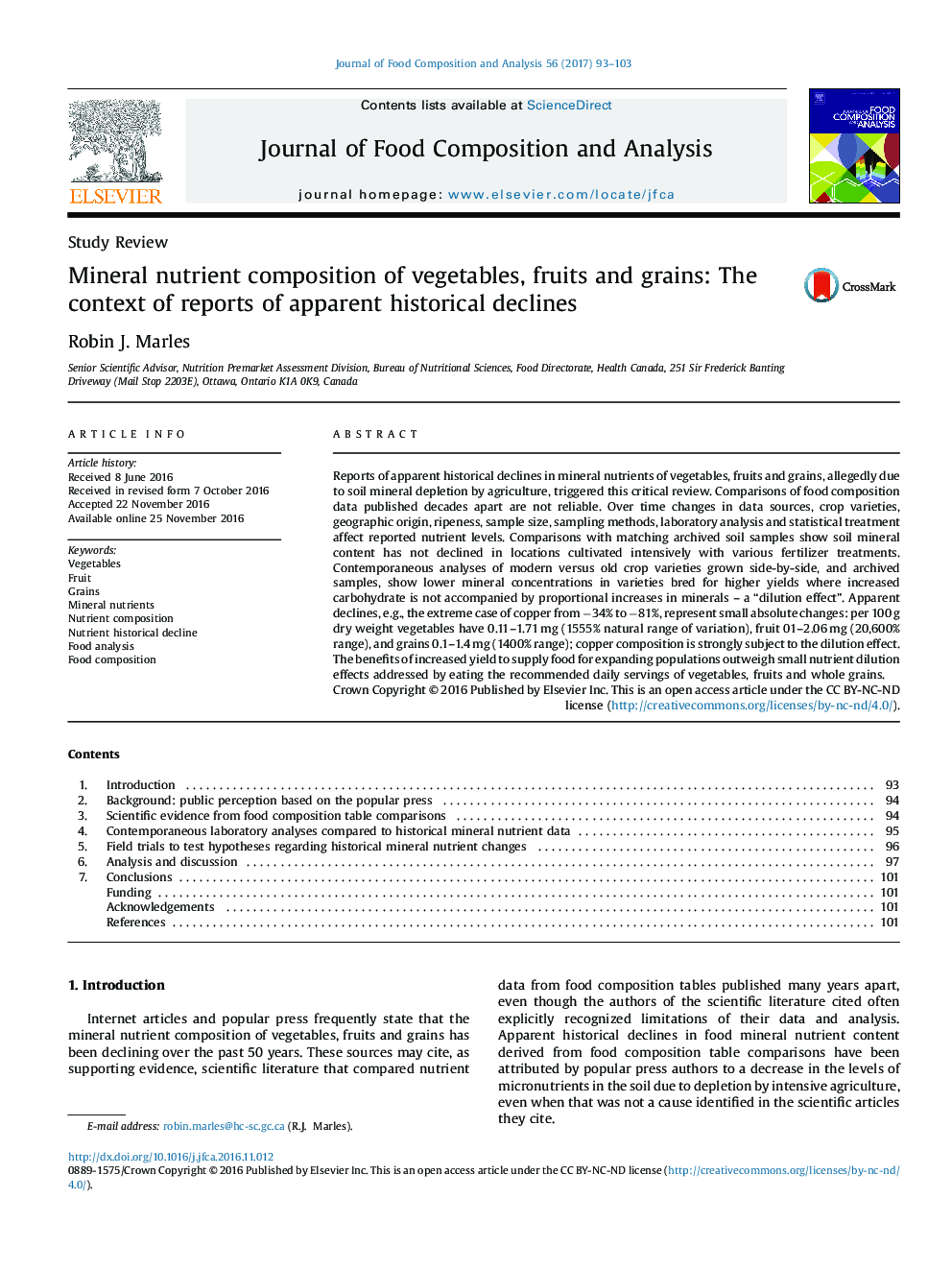| Article ID | Journal | Published Year | Pages | File Type |
|---|---|---|---|---|
| 5136983 | Journal of Food Composition and Analysis | 2017 | 11 Pages |
Abstract
Reports of apparent historical declines in mineral nutrients of vegetables, fruits and grains, allegedly due to soil mineral depletion by agriculture, triggered this critical review. Comparisons of food composition data published decades apart are not reliable. Over time changes in data sources, crop varieties, geographic origin, ripeness, sample size, sampling methods, laboratory analysis and statistical treatment affect reported nutrient levels. Comparisons with matching archived soil samples show soil mineral content has not declined in locations cultivated intensively with various fertilizer treatments. Contemporaneous analyses of modern versus old crop varieties grown side-by-side, and archived samples, show lower mineral concentrations in varieties bred for higher yields where increased carbohydrate is not accompanied by proportional increases in minerals - a “dilution effect”. Apparent declines, e.g., the extreme case of copper from â34% to â81%, represent small absolute changes: per 100Â g dry weight vegetables have 0.11-1.71Â mg (1555% natural range of variation), fruit 01-2.06Â mg (20,600% range), and grains 0.1-1.4Â mg (1400% range); copper composition is strongly subject to the dilution effect. The benefits of increased yield to supply food for expanding populations outweigh small nutrient dilution effects addressed by eating the recommended daily servings of vegetables, fruits and whole grains.
Related Topics
Physical Sciences and Engineering
Chemistry
Analytical Chemistry
Authors
Robin J. Marles,
